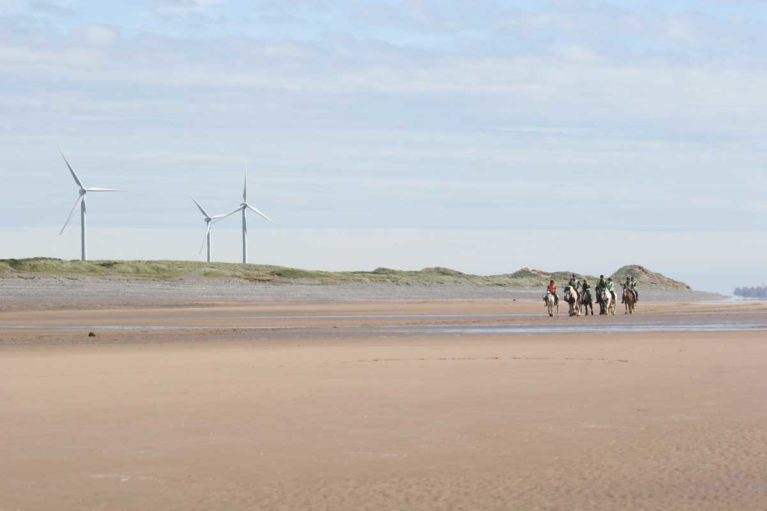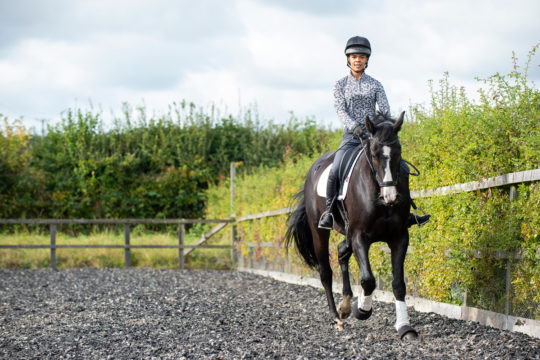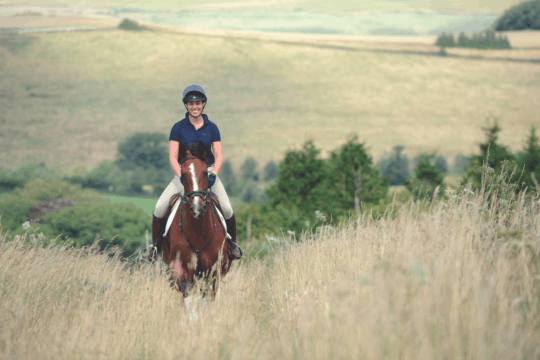Considering an outing to the beach with your equine best friend? Here are H&R’s five top tips to keep you safe as houses on the sand

For many riders, enjoying the idyllic UK coastline atop their horse seems like the perfect way to spend a well-earned day off, and if you’ve never set hoof on the beach before, it’s almost certainly on your bucket list. However, unless you’re lucky enough to be stabled with the beach on your doorstep, coastal rides require a bit of planning. With some forward-thinking and time to prepare, a beach ride is sure to be a positive experience for you and your horse.
Here’s how you can best get ready for your coastal outing.
- Right to ride
First things, first, it’s essential that you check the rules and restrictions for riding on your chosen beach. These guidelines are there to keep you, your horse and others safe on the coast, so take care to follow them to the letter. Here are a few things to bear in mind before you box up and head out…
- check when and where your local beach allows riders – this might be at certain times of day or year to avoid peak visiting hours
- plan to arrive at the beach a couple of hours before low tide to give yourself the most time on the sand, and avoid visiting at high tide. The Met Office, BBC and local councils have tide timetables available
- there will likely be protected areas you can’t ride on, such as dunes and marshes. Make sure you know where these are so you can avoid them
- double check whether the beach requires a permit or if there are any charges in order for you to use it – the local council will be able to advise
TOP TIP
The British Horse Society (BHS) has a list of horse-friendly beaches available on their website. The local council will be able to provide you with individual beach guidelines as well as details of available parking and suitable access points.
- Walk this way
It’s always worth doing a recce on your chosen beach before making the drive with your horse. Why not meet your friends and their dogs there for a stroll? It’ll give you a great opportunity to assess which areas are safe to ride on, as well as checking where you can park. The going on sandy beaches can be deceptive, too, so knowing which areas will provide firm, consistent going – and which ones won’t – is essential to having a successful day out.
- Strength in numbers
You wouldn’t take your horse for his first hack in a new place by himself, so the beach should be no different. Horses often feel insecure in new situations, particularly those with such unfamiliar sights and sounds. Ensure you go with a friend whose horse is familiar with the beach to keep you both confident. It’s not just your horse that will benefit from having a friend. You’re sure to stay safer in company than if you go it alone. Should the worst happen and you take a tumble, having a confident pair of hands to help will go a long way towards preventing problems escalating and keeping you both calm.
TOP TIP
Make sure you have the coastguard’s emergency number for whichever beach you’re visiting. Having it to hand will get you help quicker in an emergency.
- Perfect prep
Every owner’s goal is to ensure their horse has a great day out – wherever you may be. Luckily, there are a few things you can do to set your horse up for success…
- make sure your horse loads and travels It may be a big journey from the yard to the beach, so making sure your horse travels well is essential to ensuring the rest of the day runs smoothly
- he’ll need to work quietly in open spaces with other horses. Make sure he can hack out with a group and go for a canter together without any hassle. He’ll need to be happy in front or behind, too, so practise this while hacking at home
- get him used to dogs and walkers, as well as prams and umbrellas, before you go so a busy beach doesn’t get the better of him. You’re unlikely to have the sand to yourself, and fellow beach users can be unpredictable
- Kit list
Knowing exactly what you need to bring will help keep you confident and safe on the big day. So, here are a few things to add to your kit list…
- an up-to-standard riding helmet and, ideally, a body protector or air jacket
- spare clothes in case you get wet or cold
- a cooler and another, thicker rug for your horse for after your ride
- water for him to drink and to wash him off with
- a neckstrap, martingale or breastplate
- brushing and overreach boots
- high-vis for you and your horse so you can be spotted from a distance, even if separated
- tags with your contact details on to attach to your horse’s saddle and bridle in case you part company
DID YOU KNOW?
If you fancy a trip to the beach but don’t think your horse would enjoy the day as much as you, you could contact one of the many BHS-accredited riding centres along the coast and hit the sand with one of their experienced mounts.








